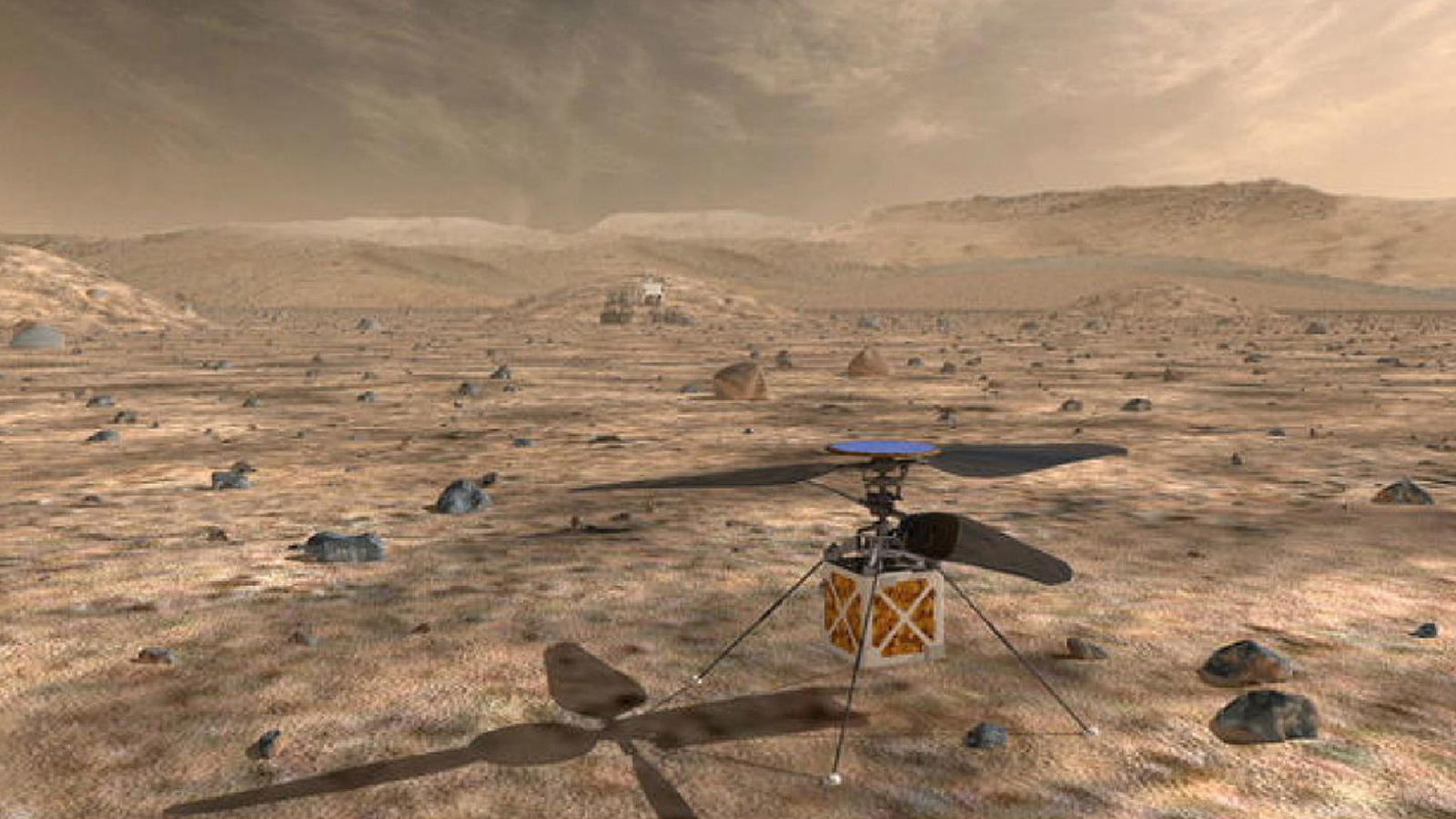Stay Up to Date
Submit your email address to receive the latest industry and Aerospace America news.
NASA’s announcement that it will add a tiny helicopter to its planned Mars 2020 rover came after a series of test flights inside a vacuum chamber proved the feasibility of adapting consumer drone technologies into a craft capable of flying in an atmosphere just 1 percent as dense as Earth’s.
If all goes as planned, the softball-sized, 1.8-kilogram Mars Helicopter will become the first heavier-than-air vehicle to fly in another world’s atmosphere. The Soviet Union in 1985 flew balloons in the skies of Venus carrying the Vega 1 and 2 probes to study the atmosphere. U.S. scientists and engineers have since the 1970s envisioned flying fixed-wing aircraft on Mars. A recent proposal was to fold up a glider inside a cubesat and detach it from the Mars 2020 capsule during descent.
The plan announced by NASA in May calls for the rover to place the helicopter on the surface after it lands in February 2021 and then back away. The helicopter will take off for 30 days of flights that will include numerous takeoffs and landings from the Martian surface.
The closest thing to a science instrument aboard the helicopter will be a color camera. “If we are successful demonstrating [the helicopter] flying on Mars this will open the door to future missions, a next generation of helicopters designed to carry scientific instruments,” says Mimi Aung, the project manager for the Mars Helicopter at the NASA-funded Jet Propulsion Laboratory in California.
The minimalist design was made possible by capitalizing on durable lightweight materials, solar cells, lithium ion batteries and autonomous flight software developed for consumer drones, Aung says. Manufacturing of the flight helicopter is due to be completed by the end of the year. NASA JPL is building the fuselage and has been working with California-based drone maker AeroVironment, which is building the landing gear and rotor.
Aung’s team test flew a prototype helicopter in January in the Twenty-Five Foot Space Simulator at JPL. “We took it close to near vacuum and backfilled it with carbon dioxide gas to get to Mars atmospheric density,” Aung explains.
The twin, counter-rotating blades of the electric-powered Mars Helicopter must spin 10 times as fast as an average helicopter on Earth to get the same lift.
NASA had also considered the glider concept called PRANDTL-M, short for the Preliminary Research Aerodynamic Design to Land on Mars and a reference to Ludwig Prandtl, who is famous for research to reduce drag from wings. Al Bowers, the chief scientist at NASA’s Armstrong Flight Research Center and the glider project’s manager, says his team will propose flying a glider as part of a future Mars mission. The glider would measure density, pressure and temperature of the Martian atmosphere while gliding to the surface.
Bowers says he is “very excited about the helicopter project’s potential to open the door to Mars aeronautics,” including his own glider.
In the late 1970s, NASA Dryden Flight Research Center aerospace engineer Robert Dale Reed designed a hydrazine-propelled plane that would have unfolded to fly on Mars. An earlier gasoline-fueled version of Reed’s plane called the Mini-Sniffer test flew from 1975 to 1977 to study how to measure pollution from high altitudes on Earth.
About Tom Risen
As our staff reporter from 2017-2018, Tom covered breaking news and wrote features. He has reported for U.S. News & World Report, Slate and Atlantic Media.
Related Posts
Stay Up to Date
Submit your email address to receive the latest industry and Aerospace America news.




